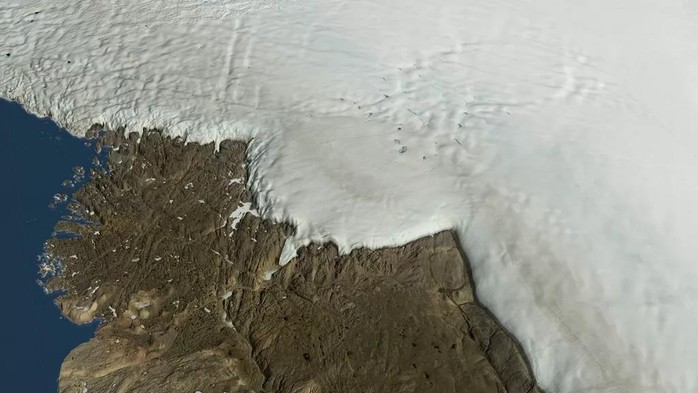Hidden beneath the thick ice of Greenland lies a mysterious structure measuring up to 31 km in diameter, linked to an unknown alien object.

According to Space, researchers from the GLOBE Institute at the University of Copenhagen in Denmark and the Swedish Museum of Natural History have discovered a structure they suspect is a giant impact crater beneath the thick Hiawatha Ice Sheet in Greenland.
The Danish team took a sand sample from Hiawatha Crater and heated it using argon gas released from the grains to determine the impact event. Meanwhile, the Swedish team took rock samples in another independent study to determine the date based on traces of uranium from the mineral zircon.

Both studies show that the time of the collision was 58 million years ago.
Research also shows that at the time of the disaster, Greenland was not an ice island but a tropical rainforest. The mysterious object, believed to be an asteroid, struck Earth with a force several million times stronger than an atomic bomb, leaving a giant crater, destroying part of Greenland and causing a global climate impact.

Scientists said they plan to continue research to determine the exact damage from the collision. But it is expected to be a severe shock to Earth still recovering from the Chicxulub disaster that wiped out the dinosaurs.
They have also not directly determined whether material from the alien attacker was trapped in the impact crater, or how much of the asteroid may still be buried under ice. Those are also the goals of further investigations.
Preliminary research has just been published in the journal Science.






